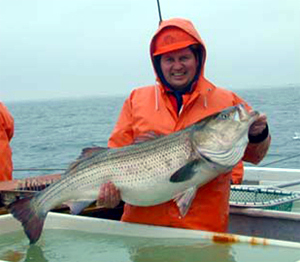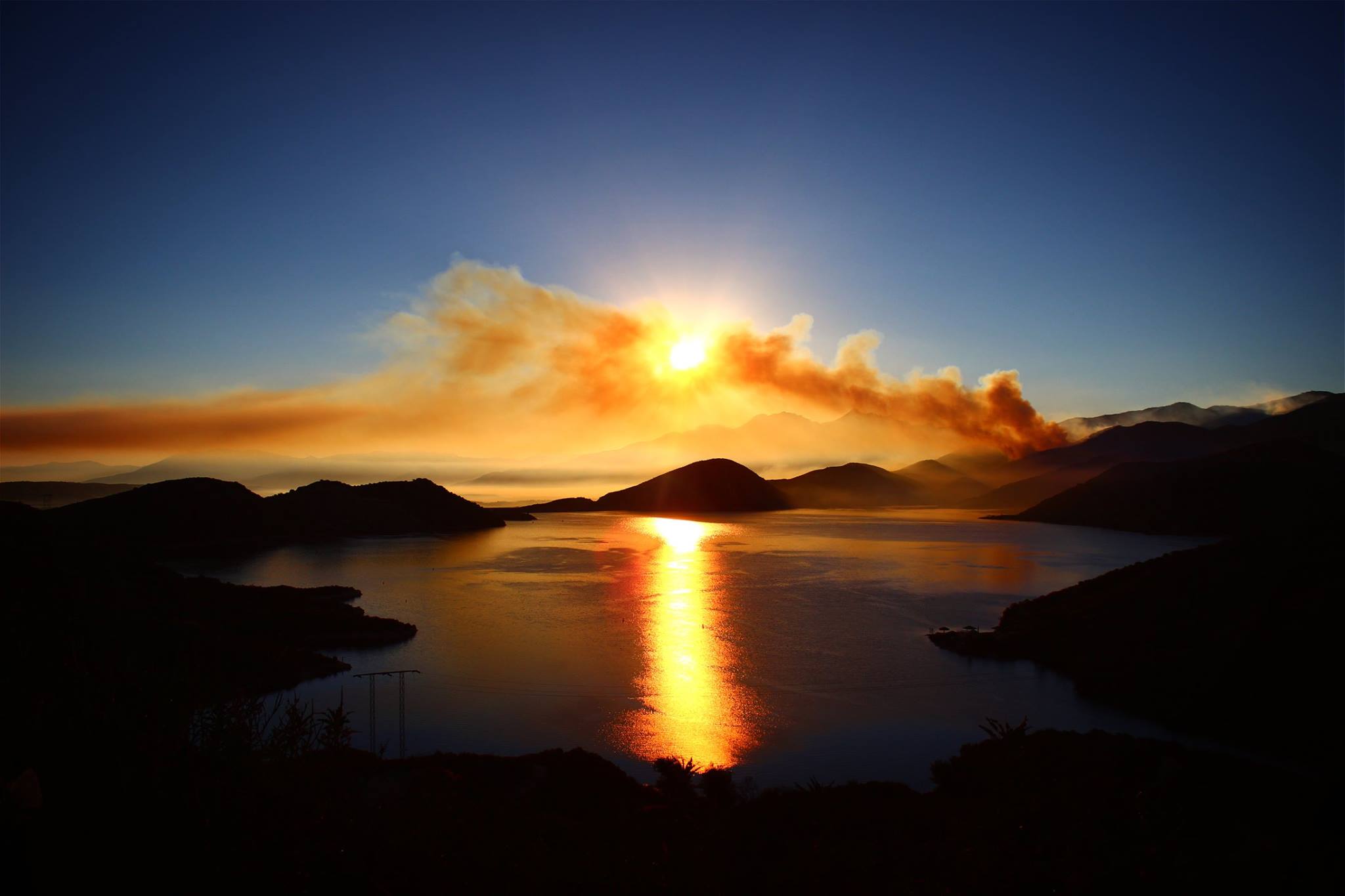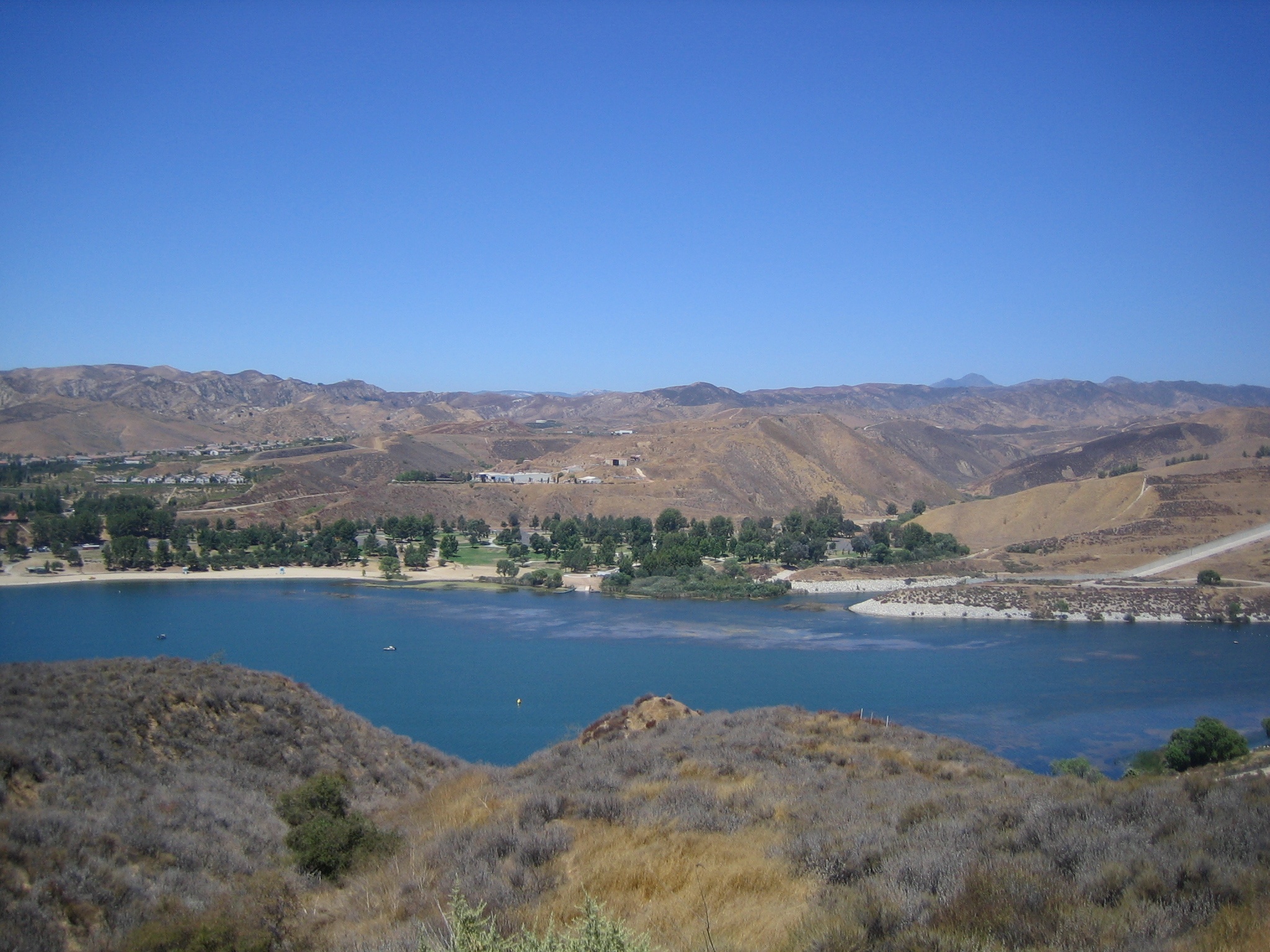|
Morone Saxatilis
The striped bass (''Morone saxatilis''), also called the Atlantic striped bass, striper, linesider, rock, or rockfish, is an anadromous perciform fish of the family Moronidae found primarily along the Atlantic coast of North America. It has also been widely introduced into inland recreational fisheries across the United States. Striped bass found in the Gulf of Mexico are a separate strain referred to as Gulf Coast striped bass. The striped bass is the state fish of Maryland, Rhode Island, and South Carolina, and the state saltwater (marine) fish of New York, New Jersey, Virginia, and New Hampshire. The history of the striped bass fishery in North America dates back to the Colonial period. Many written accounts by some of the first European settlers describe the immense abundance of striped bass, along with alewives, traveling and spawning up most rivers in the coastal Northeast. Morphology and lifespan The striped bass is a typical member of the family Moronidae in shape, ... [...More Info...] [...Related Items...] OR: [Wikipedia] [Google] [Baidu] |
Johann Julius Walbaum
Johann Julius Walbaum (30 June 1724 – 21 August 1799) was a German physician, naturalist and fauna taxonomist. Works As an ichthyologist, he was the first to describe many previously unknown fish species from remote parts of the globe, such as the Great Barracuda (''Sphyraena barracuda''), the Chum salmon (''Oncorhynchus keta'') from the Kamchatka River in Siberia, and the curimatá-pacú (''Prochilodus marggravii'') from the São Francisco River in Brazil. He was also the first to observe gloves as a preventative against infection in medical surgery. In 1758, the gloves he observed were made from the cecum of the sheep, rather than rubber, which had not yet been discovered. Legacy The Natural History Museum in Lübeck, opened in 1893, was based on Walbaum's extensive scientific collection, which was lost during the Second World War World War II or the Second World War, often abbreviated as WWII or WW2, was a world war that lasted from 1939 to 1945. It ... [...More Info...] [...Related Items...] OR: [Wikipedia] [Google] [Baidu] |
Reservoir
A reservoir (; from French ''réservoir'' ) is an enlarged lake behind a dam. Such a dam may be either artificial, built to store fresh water or it may be a natural formation. Reservoirs can be created in a number of ways, including controlling a watercourse that drains an existing body of water, interrupting a watercourse to form an embayment within it, through excavation, or building any number of retaining walls or levees. In other contexts, "reservoirs" may refer to storage spaces for various fluids; they may hold liquids or gasses, including hydrocarbons. ''Tank reservoirs'' store these in ground-level, elevated, or buried tanks. Tank reservoirs for water are also called cisterns. Most underground reservoirs are used to store liquids, principally either water or petroleum. Types Dammed valleys Dammed reservoirs are artificial lakes created and controlled by a dam A dam is a barrier that stops or restricts the flow of surface water or underground streams ... [...More Info...] [...Related Items...] OR: [Wikipedia] [Google] [Baidu] |
San Francisco Bay
San Francisco Bay is a large tidal estuary in the U.S. state of California, and gives its name to the San Francisco Bay Area. It is dominated by the big cities of San Francisco, San Jose, and Oakland. San Francisco Bay drains water from approximately 40 percent of California. Water from the Sacramento and San Joaquin rivers, and from the Sierra Nevada mountains, flow into Suisun Bay, which then travels through the Carquinez Strait to meet with the Napa River at the entrance to San Pablo Bay, which connects at its south end to San Francisco Bay. It then connects to the Pacific Ocean via the Golden Gate strait. However, this entire group of interconnected bays is often called the ''San Francisco Bay''. The bay was designated a Ramsar Wetland of International Importance on February 2, 2017. Size The bay covers somewhere between , depending on which sub-bays (such as San Pablo Bay), estuaries, wetlands, and so on are included in the measurement. The main part of the bay meas ... [...More Info...] [...Related Items...] OR: [Wikipedia] [Google] [Baidu] |
Diamond Valley Lake
Diamond Valley Lake is a man-made off-stream reservoir located near Hemet, California, United States. It is one of the largest reservoirs in Southern California and also one of the newest. With a capacity of , the lake nearly doubled the area's surface water storage capacity and provides additional water supplies for drought, peak summer, and emergency needs. The Metropolitan Water District of Southern California (MWD) began the $1.9 billion construction project in 1995. Filling of the lake, by way of the Colorado River Aqueduct, began in 1999 and was completed in 2003. The lake is currently served by the Inland Feeder. The lake features three earth fill dams, two located on either side of the valley and one on the north rim. Construction of the dams utilized nearby materials, and was one of the largest earthworks projects in the United States. Excavation of core materials for the dams resulted in many paleontological finds, all of which are displayed at the Western Science Cent ... [...More Info...] [...Related Items...] OR: [Wikipedia] [Google] [Baidu] |
Silverwood Lake
Silverwood Lake is a large reservoir in San Bernardino County, California, United States, located on the West Fork Mojave River, a tributary of the Mojave River in the San Bernardino Mountains. It was created in 1971 as part of the State Water Project by the construction of the Cedar Springs Dam as a forebay on the long California Aqueduct (consequently inundating the former town of Cedar Springs), and has a capacity of . Specifications Silverwood Lake is located on the East Branch of the California Aqueduct. It is operated by the California Department of Water Resources and provides a major water source for agencies serving nearby San Bernardino Mountain and Mojave Desert areas. Some of recreation land surround the lake. At an elevation of , Silverwood Lake is the highest reservoir in the State Water Project. Silverwood Lake State Recreation Area The Silverwood Lake State Recreation Area is one of many California State Parks features picnicking, hiking trails, swimmi ... [...More Info...] [...Related Items...] OR: [Wikipedia] [Google] [Baidu] |
Pyramid Lake (Los Angeles County, California)
Pyramid Lake is a reservoir formed by Pyramid Dam on Piru Creek in the eastern San Emigdio Mountains, near Castaic, Southern California. It is a part of the West Branch California Aqueduct, which is a part of the California State Water Project. Its water is fed by the system after being pumped up from the San Joaquin Valley and through the Tehachapi Mountains. History In 1843, gold was discovered near what is now Pyramid Lake, in the Santa Feliciana Canyon, just south of what is now Pyramid Dam. The small find failed to trigger a rush to the mountainous countryside. Only Francisco Lopes, owner of Rancho Temescal, a Mexican land grant, and a handful of ranchers attempted to settle the region. This lake was created in 1972, and completed in 1973, as a holding reservoir for the California State Water Project. The lake was named after a pyramid-shaped rock carved out by engineers building U.S. Route 99. Travelers between Los Angeles and Bakersfield christened the landmark � ... [...More Info...] [...Related Items...] OR: [Wikipedia] [Google] [Baidu] |
Castaic Lake
Castaic Lake (Chumash: ''Kaštiq'') is a reservoir formed by Castaic Dam on Castaic Creek, in the Sierra Pelona Mountains of northwestern Los Angeles County, California, United States, near the town of Castaic. The California Office of Environmental Health Hazard Assessment has issued a safety advisory for any fish caught in Castaic Lake and Castaic Lagoon due to elevated levels of mercury and PCBs. Description The lake, with a surface elevation of approximately above sea level, is the terminus of the West Branch California Aqueduct, though some comes from the Castaic Creek watershed above the dam. Castaic Lake is bisected by the Elderberry Forebay Dam, which creates the adjacent Elderberry Forebay. The aqueduct water comes from Pyramid Lake through the Angeles Tunnel and is used to power Castaic Power Plant, a pumped-storage hydroelectric facility on the northern end of the forebay. Water is mostly powering the turbines, rather than being pumped by them. Castaic Lake ... [...More Info...] [...Related Items...] OR: [Wikipedia] [Google] [Baidu] |
Lake Powell
Lake Powell is an artificial reservoir on the Colorado River in Utah and Arizona, United States. It is a major vacation destination visited by approximately two million people every year. It is the second largest artificial reservoir by maximum water capacity in the United States behind Lake Mead, storing of water when full. However, Lake Mead has fallen below Lake Powell in size several times during the 21st century in terms of volume of water, depth and surface area. Lake Powell was created by the flooding of Glen Canyon by the Glen Canyon Dam, which also led to the 1972 creation of Glen Canyon National Recreation Area, a popular summer destination of public land managed by the National Park Service. The reservoir is named for John Wesley Powell, a civil war veteran who explored the river via three wooden boats in 1869. It primarily lies in parts of Garfield, Kane, and San Juan counties in southern Utah, with a small portion in Coconino County in northern Arizona. The northe ... [...More Info...] [...Related Items...] OR: [Wikipedia] [Google] [Baidu] |
Lake Havasu
Lake Havasu () is a large reservoir formed by Parker Dam on the Colorado River, on the border between San Bernardino County, California and Mohave County, Arizona, Arizona. Lake Havasu City sits on the Arizona (eastern) side of the lake with its Californian counterpart of Havasu Lake directly across the lake. The reservoir has an available capacity of . The concrete arch dam was built by the United States Bureau of Reclamation between 1934 and 1938. The lake's primary purpose is to store water for pumping into two aqueducts. Prior to the dam construction, the area was home to the Mojave people. The lake was named (in 1939) after the Mojave word for ''blue''. In the early 19th century, it was frequented by beaver trappers. Spaniards also began to mine the areas along the river. Aqueducts Mark Wilmer Pumping Plant pumps water into the Central Arizona Project Aqueduct. Whitsett Pumping Plant is located on the lake, and lifts the water for the Colorado River Aqueduct. Gene Pumpi ... [...More Info...] [...Related Items...] OR: [Wikipedia] [Google] [Baidu] |
Lake Pleasant Regional Park
Lake Pleasant Regional Park is a large outdoors recreation area straddling the Maricopa and Yavapai county border northwest of Phoenix, Arizona. The park is located within the municipal boundaries of Peoria, Arizona, and serves as a major recreation hub for the northwest Phoenix metropolitan area. Lake Pleasant The cornerstone of the park is the , Lake Pleasant, one of the important artificial reservoirs surrounding the Phoenix metropolitan area. Created by the Carl Pleasant Dam, which was finished in 1927, and upon completion, was the largest multi-arch dam in the world. The lake originally had a surface area of and served as a private irrigation project. At high and long, the original Carl Pleasant Dam was, at its completion, the largest agricultural dam project in the world. The lake was filled by the Agua Fria River, capturing a large watershed throughout Yavapai County. Construction of the Central Arizona Project Aqueduct, which began in 1973, soon diverted water f ... [...More Info...] [...Related Items...] OR: [Wikipedia] [Google] [Baidu] |
Lake Hamilton, Arkansas
Lake Hamilton is a census-designated place (CDP) in Garland County, Arkansas, United States. It is part of the Hot Springs Metropolitan Statistical Area. The population was 2,135 at the 2010 census. It is named after Lake Hamilton, one of the area's man-made lakes. Geography Lake Hamilton is located in southern Garland County at (34.428101, -93.088035), on the south side of Lake Hamilton, an impoundment on the Ouachita River. The CDP includes two large islands in the lake as well. The community is bordered to the north, across the lake, by the city of Hot Springs. According to the United States Census Bureau, the CDP has a total area of , of which is land and , or 49.48%, is water. Arkansas State Highway 7 passes through the community, bridging the lake via the two islands. Highway 7 leads north to the center of Hot Springs and south to Arkadelphia. Demographics 2020 census As of the 2020 United States census, there were 2,084 people, 962 households, and 704 families res ... [...More Info...] [...Related Items...] OR: [Wikipedia] [Google] [Baidu] |
Beaver Lake (Arkansas)
Beaver Lake is a man-made reservoir in the Ozark Mountains of Northwest Arkansas and is formed by a dam across the White River. Beaver Lake has some of shoreline. With towering limestone bluffs, natural caves, and a wide variety of trees and flowering shrubs, it is a popular tourist destination. Beaver Lake is the source of drinking water in Northwest Arkansas, which is managed, treated and sold by Beaver Water District. Beaver Dam Beaver Dam was authorized by the Flood Control Act of 1944 and other following acts. The United States Army Corps of Engineers constructed Beaver Dam during the years 1960-1966, impounding a major part of the White River and creating Beaver Lake and flooding much of the valley including the remains of the historic resort town Monte Ne. The dam is located northwest of Eureka Springs, Arkansas. Construction of the powerhouse and switch yard began in 1963. Power generation began in May 1965 and continues today. The initial cost of the project was $6 ... [...More Info...] [...Related Items...] OR: [Wikipedia] [Google] [Baidu] |








